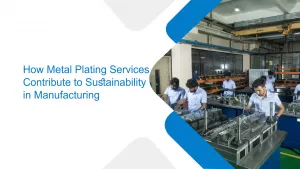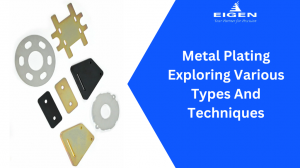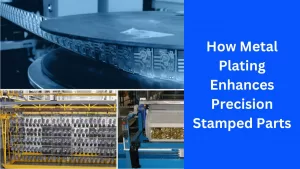AS 9100 D, ISO 9001:2015 , ISO 45001:2018, ISO 14001:2015, ISO 9001, IATF 16949 Certified Company



Metal Plating Services
Eigen is one of the foremost exponents in providing plating services globally. We are proficient in all of the latest in plating methodologies and are also eco-pioneers implementing clean and environmentally friendly plating techniques.
We possess the technology and expertise when it comes to barrel plating which can cater to a variety of industries ranging from aerospace to automotive and consumer durables for a wide range of precious metals like gold, and silver; and non-precious metals such as tin, copper, nickel and more. We also have the capabilities to work with metal alloys such as palladium-nickel, copper-nickel, and other similar ones. With a global presence that spans all continents and geographies; wherever you are located, you are probably not too far away from Eigen.
What is Plating?
Plating refers to the process through which a workpiece or material’s surface is covered with a new metal. It changes the performance and qualities of the original material, making it useful in metal plating services. Plating also has several benefits like friction reduction and corrosion protection.
What is Plating Used For?
Plating as a process is used for inhibiting corrosion, decorating products, improving solderability, hardening, improving wearability, reducing friction, improving paint adhesion, altering conductivity, improving IR reflectivity, and shielding against radiation.
Metal Plating Processes
Metal plating is an important industrial process used to coat surfaces with thin layers of metal for various purposes. Plated metal has multiple uses in various industries. Here, we explore two most commonly used Metal Plating Processes:
- Electrolytic Plating Process: Electrolytic electroplating involves coating a workpiece with a thin layer of metal using controlled electrolysis. This process requires the workpiece (cathode) and a metal-containing part (anode) to be immersed in an electrolyte bath while an electric current is applied. The metal ions now move from the anode to the cathode. This forms a metal coating on the workpiece. Electroplating is commonly used on conductive materials such as metals but can also be applied to non-conductive surfaces with special pre-coating processes.
- Electroless Plating Process: Electroless plating is a chemical method of metal plating that does not need electricity. Instead, it relies on chemical reactions to deposit metal ions onto the surface of the workpiece. This process is particularly useful for plating non-conductive materials. Electroless plating evenly deposits metal ions, making it suitable for complex shapes and hard-to-reach areas. Nickel plating is the most commonly used technique, but other metals like copper and silver can also be applied.
Material Used in Electroplating
An object can have one metal or several metals electroplated on it. To boost the strength and conductivity, we choose to overlay metals such as copper, nickel, tin and silver. These materials are most frequently utilized during the Metal Plating process and among them Nickel is widely used.
With a glossy to bright luster and a light hint of gold color, nickel is a silvery-white metal used in electroplating. Because of its exceptional wear and corrosion resistance, leveling and smoothing properties, and hardness, Nickel, when mixed with Phosphorus, is usually utilized as a base layer for plating. Nickel can be applied to cavities, nooks, and holes and it does not accumulate on edges.
Applications & Benefits of Metal Plating
As one of the leading metal plating companies, Eigen produces metal-plated components that are used in various industries, and among them, the most important are listed here:
- Automobile: Engine parts, electrical connectors, fuel systems, and decorative trim, and much more benefit from automotive plating’s wear resistance, corrosion resistance, and aesthetic appeal.
- Coinage: The silver coin is made of robust, shiny steel that has been nickel-plated.
- Aerospace: Nickel plating is a lightweight, long-lasting coating that can be applied uniformly to intricate or highly detailed components in the aerospace sector.
- Electronics: Microprocessors, connections, and PCB circuits are a few of the electronic components that benefit greatly from metal plating.
Our Plating Services:
Eigen Engineering possesses the expertise and technology needed for plating services, a process that caters to a wide range of industries – from automotive to aerospace to consumer durables. We also cater to the precious metal industry, working with metals like silver and gold, as well as other metals like nickel, copper, and tin. As an industrial plating company, we also work with metal alloys like copper-nickel and palladium-nickel alloys. Our global presence puts us well within reach of wherever you are – across geographies, countries, and continents.
Barrel Plating Services:
Barrel plating refers to the process used to plate smaller industrial components that are generally hard to plate. Using our barrel plating services, components are slowly tumbled within a cage shaped like a barrel. This is made of non-conducting material submerged within a tank that contains the electrolyte. Several flexible metal wires get used in making cathodic contact with these small parts in the electrolyte. Stationary anodes line within the tank and surround both the components and the barrel.
Metal Plating Services:
As one of the world’s leading metal plating companies, we use a manufacturing process called plating to make parts stronger, corrosion-proof, and rust-resistant. In this method, a substrate is coated with a thin metal layer. The two key ways to achieve the desired results are
- By using electroplating, where an electric current is used.
- By using the electroless plating method, which is an autocatalytic process of chemical combination.
Nickel Electroplating Services
Nickel as a metal combines with different materials and also forms alloys that help in improving the hardness and resisting corrosion and friction. Nickel Electroplating is a preferred method for industrial applications. We use various nickel electroplating techniques as a part of the plating services offered at Eigen Engineering.
Copper Plating Service:
One of the most ancient methods of metal finishing practiced even today is Copper plating.
As a plating company, copper plating is one of Eigen’s key plating service offerings. Copper generally gets tarnished over time because of oxidation.
Barrel Plating Service:
Barrel plating is a technique that is used for plating small components that are otherwise difficult to plate. In this method, the parts are tumbled slowly in a barrel-shaped cage made from a non-conducting material, which is in turn submerged in a talk containing the electrolyte. Flexible metal wires are used to make cathodic contact with the tiny parts immersed in the electrolyte. There are stationary anodes that line the inside of the tank surrounding the barrel and the parts placed within it.
Silver Plating Service:
Silver plating as a service is widely used for engineering and electronics applications, where corrosion resistance and solderable surfaces are needed. This plating process also helps improve thermal and electrical conductivity, thermo-compression bonds,`and electric appliances and products that need spectral reflectivity. Silver oxidizes very fast as it isn’t a natural metal. However, out of every metal used in plating services, silver is the most thermally and electrically conductive.
Other Pioneering Plating Techniques
We can set up an automated barrel plating assembly designed to your specifications to suit your requirements, or you can use our electroless nickel plating services with an auto-catalytic plating technique to deposit a layer of nickel alloy on a metal or non-metal workpiece.
We are also at the forefront of new plating techniques that use lead-free whiskers and an in-line reflow, which are both state-of-the-art as well as environmentally friendly plating implementations.
Eigen’s Promise of Quality
Quality is paramount here at Eigen, and we make sure that all metal services we offer our customers are of the best and highest quality and meet all the required quality standards. Our quality control laboratories are equipped with state-of-the-art testing instruments such as X-ray fluoroscopy to measure thickness, video microscopes for minute yet accurate visuals, steam aging, cross-sectioning equipment, salt spray test equipment, metallurgical microscopes, and more to assure consistent high-quality plating from our end.
Our plating techniques can be applied to metal products that were both stamped or formed. These techniques can also be used on slip stock. We can deliver the finished electroplated metals in the form of pancake coils and spools, wound transversely.
Industries We Serve:
Eigen offers industrial metal plating and other metal services that have multiple applications across global industries. Some of the leading industries and applications Eigen caters to are:
- Aerospace – Connectors, HV relays, cabin light sensors, engine components, electro mechanical relays
- Electronics and electricals – Switch gears, relays and circuit breakers, miniature motors, electronic time locks, tube fuses
- Automotive and ancillary – Car doors, starter solenoid valves, coolant pump seating, window lift motors
- Industrial – RFID devices, modular jacks, impact matrix printers, electronic energy meters
- Consumer durables – mobile chargers, connector
Eigen’s 20 year of expertise in:
- Custom Engineered High Tolerance Components
- Complex and Critical Parts
- Turnkey Packages
- Assembly & Sub-Assembly
Copper Plating Service:
One of the most ancient methods of metal finishing practiced even today is Copper plating.
Frequently Asked Questions
Electrolytic nickel plating services need a DC charge and a catalyst to kick off a chain reaction that chemically layers a product with nickel. Through this plating process, the density of the deposit depends on the duration for which the product stays submerged and the number of amps per square foot applied. This is done in 2 steps:
- The product surface is pre-treated and cleaned before being plated.
- The product is submerged in the plating bath composed of dissolved and positively charged nickel-phosphorus.
There are advantages of both these metals for plating. Zinc is mainly used for higher corrosion resistance for smaller metal components like bolts and screws.However, nickel hardens the product’s surface and increases its natural resistance capabilities. Nickel also has superior corrosion protection capabilities.
Services
Customer Testimonials
Good experience in fine stamping.
Good management makes good association – good association makes good products. That is Eigen for you!
Great systems and organisation. You are our potential supplier for stamped parts.
The parts I saw adds to my conviction that you are a quality Operation. This lends credibility to the nation and you will be successful in making our parts.
Excellent tool room facilities, very satisfied customers.
TRUSTED PROFILE BRANDS












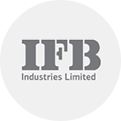
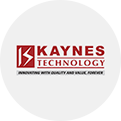
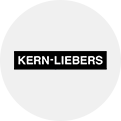
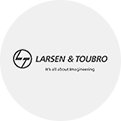

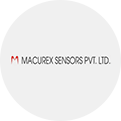
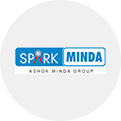

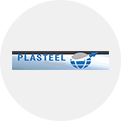



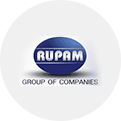
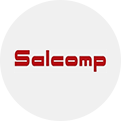

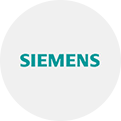


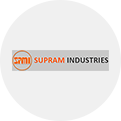
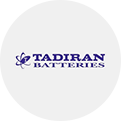
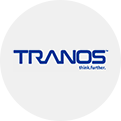

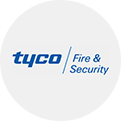
Blog Categories
Recent Posts
- What is Custom Metal Stamping and Its Techniques, Benefits, and Applications?
- Inside the Electric Car Engine: The Future of Automotive Power
- What is the Difference Between Tool and Die?
- What is Metal Manufacturing: From Raw Materials to Finished Products
- What Is The Difference Between Coining and Embossing

Why EIGEN?
Backed by decades of expertise in design, development, manufacturing and supply of progressive metal stamping tools and components.
Location
Located in the technology capital of India, we have quick access to ports, easy availability of established vendors and excellent tool making expertise.
Reliability
Eigen is a supplier for Customers in Europe, the USA in the aerospace, locomotive and electronics segment with proven track record of product quality, customer service and delivery performance.
Professional expertise
Eigen has the proven track record of design, development and manufacture of progressive press tools up to 45 stages with complex profiles.
Testimonials
what our partners have to say about us
Backed by decades of expertise in design, development, manufacturing and supply of progressive metal stamping tools and components.
Request a Quote“Excellent tool room facilities, very satisfied customers.”
- Anil.K.Srivastava, DGM, Connectwell Industries (P) Ltd.
“The parts I saw adds to my conviction that you are a quality Operation. This lends credibility to the nation and you will be successful in making our parts.”
- Leonard Challenger, Saft, USA
“Great systems and organisation. You are our potential supplier for stamped parts.”
- Umesh Kini, Global sourcing, Tyco Health care


